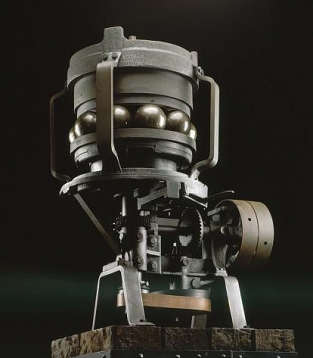- Hello Customer - Log in or Register!

Precision bearing manufacturer Schaeffler is celebrating the 125-year anniversary of the ball grinding mill, a patented machine that for the first time enabled the manufacture of precision hardened steel balls that were perfectly round and of equal size.
In 1883, after a series of laborious and costly testing, Schweinfurt-based metalworker and turner, Friedrich Fischer, succeeded for the first time in using his own invention – the ball grinding mill – to manufacture large volumes of hardened steel balls, which were of equal size and perfectly round. 125 years ago, on July 17, 1890, Fischer received his patent (number 55783) for his ball grinding machine from the Imperial Patent Office.
By fitting hardened steel balls into the bearings of bicycles, which Fischer produced himself in Schweinfurt, he ensured that they ran smoothly, making the bikes more attractive for his customers. At that time, the steel balls were manufactured using manual turning machines in England. These balls were not high precision manufactured and so were susceptible to breakage and costly to produce. Fischer therefore started to experiment by manufacturing steel balls on machines he had designed. The breakthrough came in 1883. From 1883, the first ball grinding mill developed by Fischer enabled the manufacture of precision steel balls to accuracies of 0.020 millimetres (20 µm).
On closer inspection of the ball grinding mill, it is easy to see how ingenious Fischer’s idea was. Above the untreated balls for machining is a grinding wheel, which rotates slightly eccentrically. This means that the spherical axis of rotation is tilted by approx. 1.9 degrees from the machining plane – in this case from the horizontal machining plane. Each ball rotates at approx. 30 times around its almost horizontal axis, while it rotates once around its vertical axis. As a result, the ball’s entire surface area is covered by the tool and everything that protrudes is machined off until the ball has reached an almost perfectly spherical shaped ball at the end of the machining process.
From 1883, production increased, as did the number of employees. In 1887, two men, who would soon shape the history of rolling bearings, joined Fischer’s company: Engelbert Fries and Wilhelm Höpflinger. In 1888, the milling machine designed by Höpflinger made the production of balls even more cost effective and efficient. However, in 1890, disagreements led to Fries and Höpflinger parting with Fischer and on May 15, 1890 they established their own company. Höpflinger built a replica of the patented ball grinding machine and Fischer took him to court. In its wisdom, the court made a compromising judgment and ruled the following: Fischer was confirmed as the patent owner and Höpflinger was granted license-free rights of use.
Meanwhile, Fischer’s “Erste Automatische Gußstahlkugelfabrik” and Fries & Höpflinger had gone from producing balls to producing compete ball bearings. At the turn of the last century, a wide variety of smaller companies were established in Schweinfurt, who had recognised the potential importance of the rolling bearing to industrial applications and to the rapidly growing automotive industry.
Fischer’s trademark, “F’AG”, which stands for “Fischer’s Automatische Gusstahlkugelfabrik” (the genitive apostrophe was still commonly used in 1905 and was retained in the logo until 1962) is still renowned worldwide. The principle of Fischer’s and Höpflinger’s invention, the centreless grinding of balls, is still used today by all ball manufacturers.
| Product Model | Inside Diameter | Outside Diameter | Thickness |